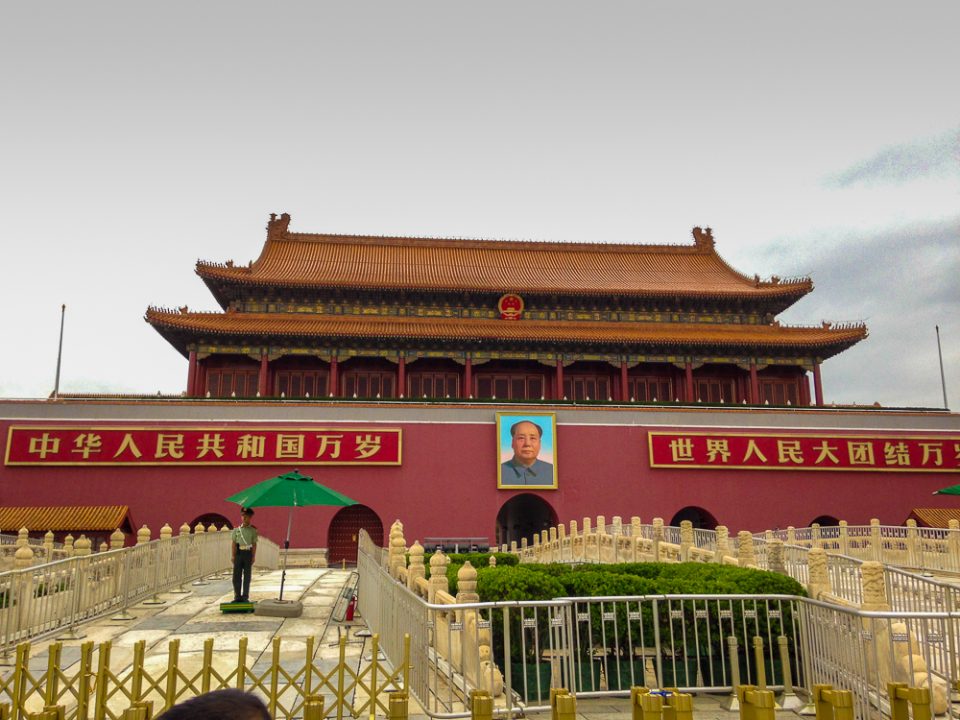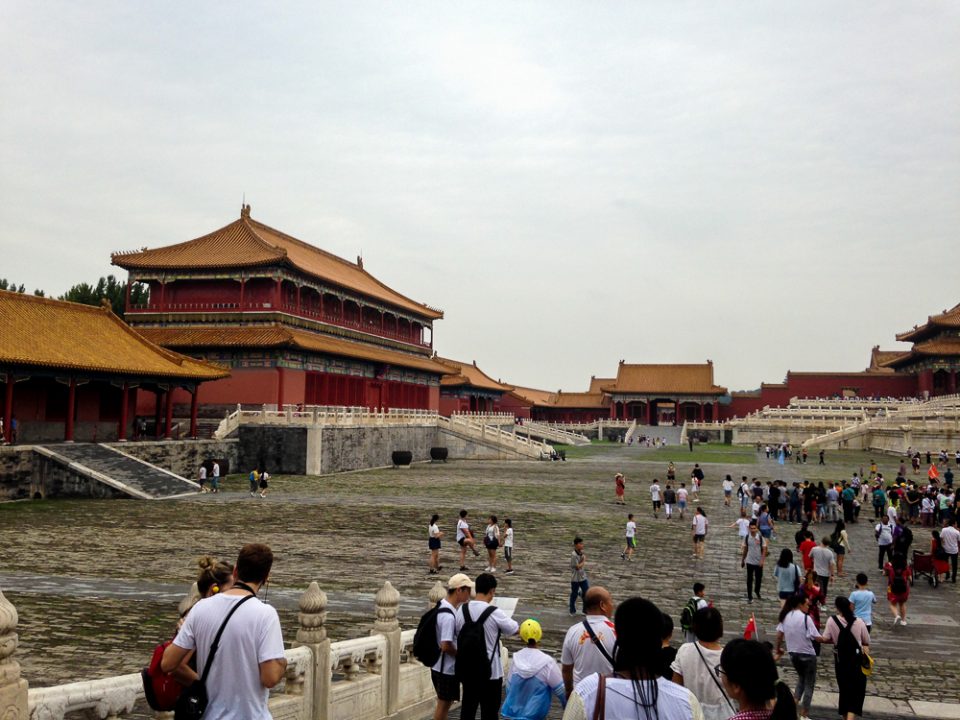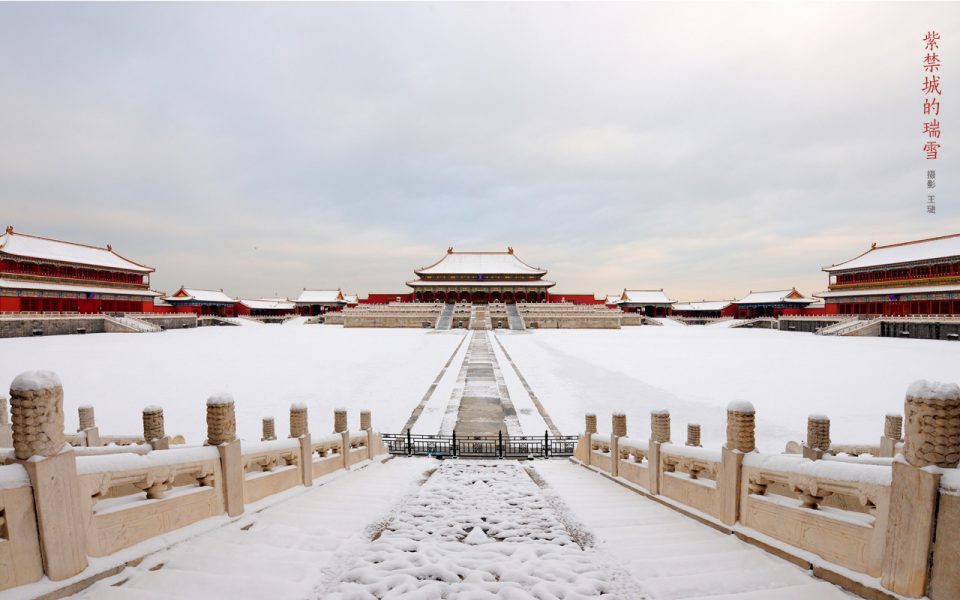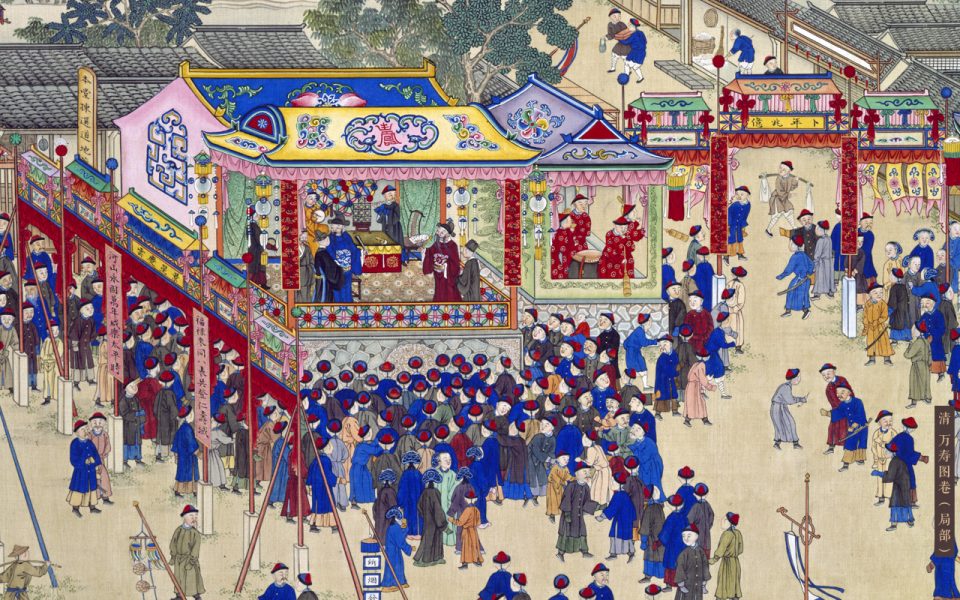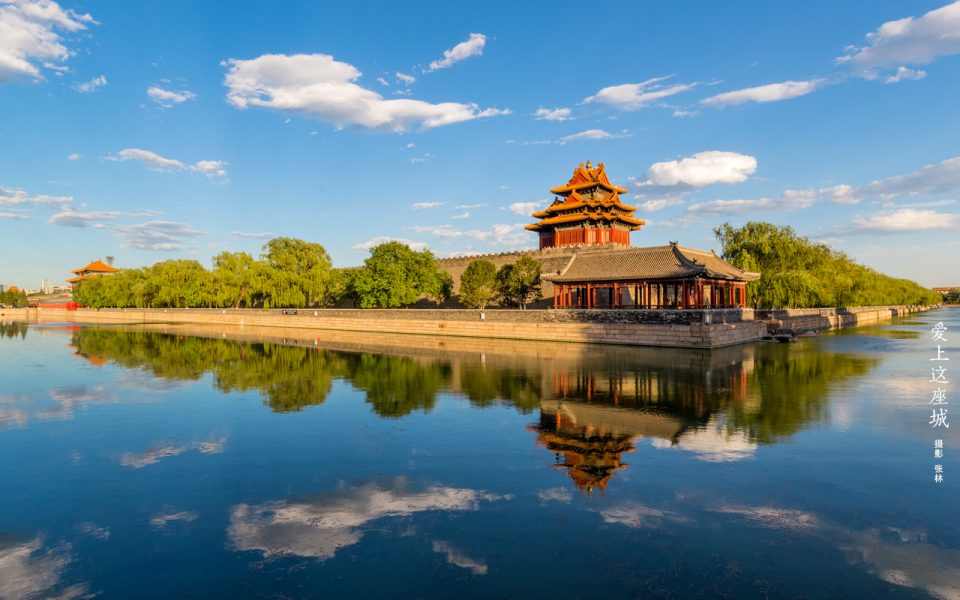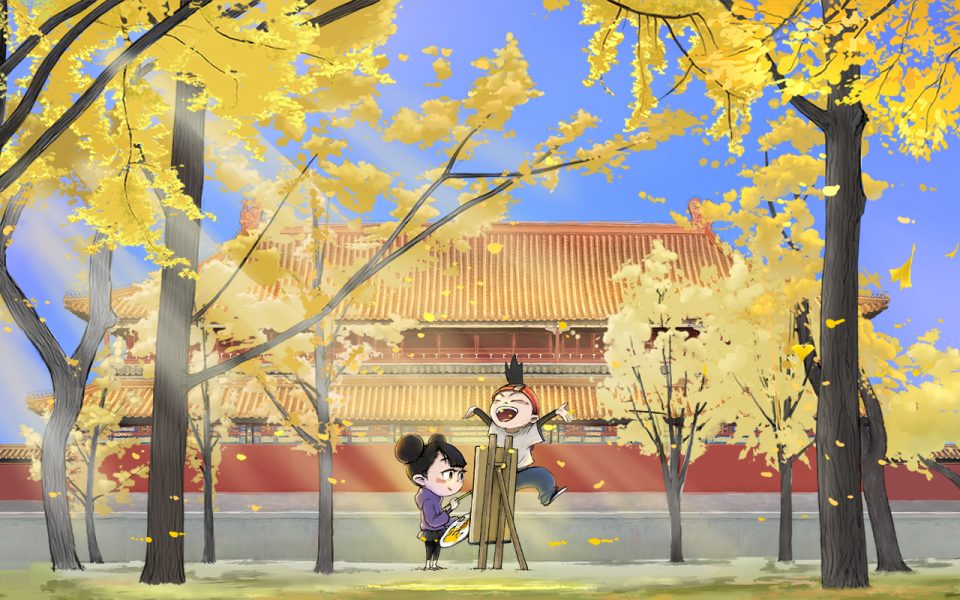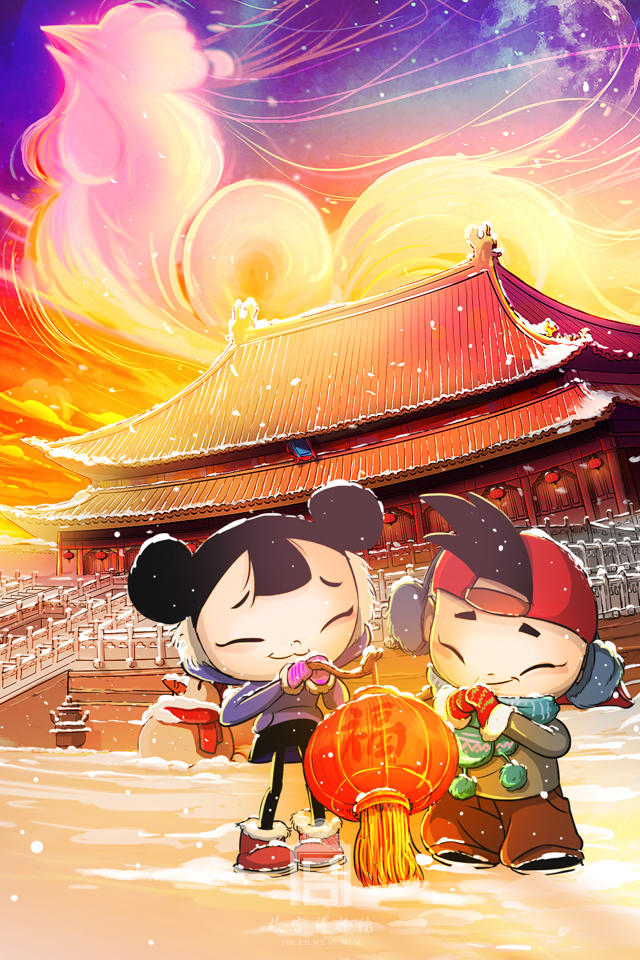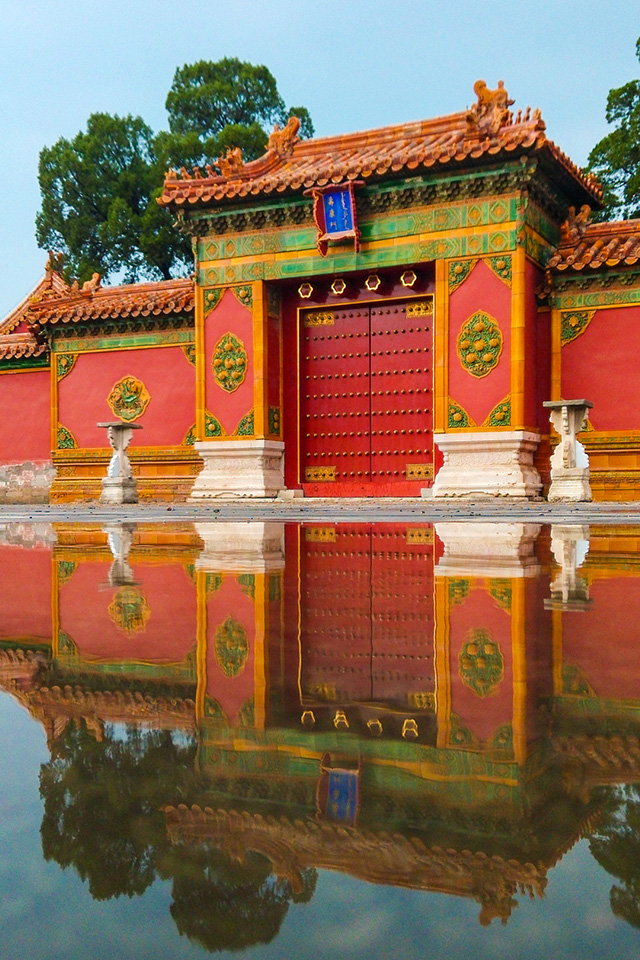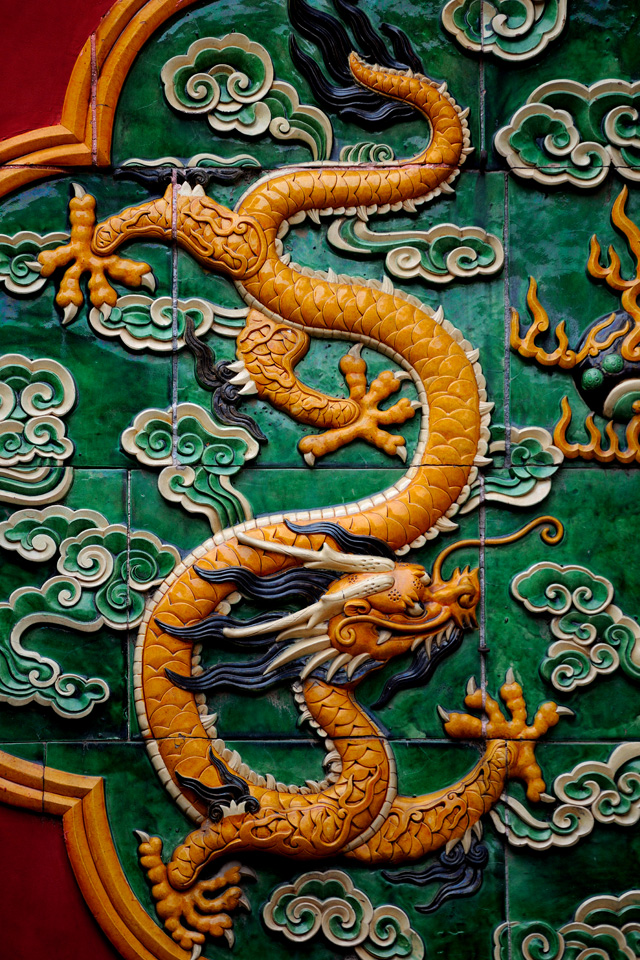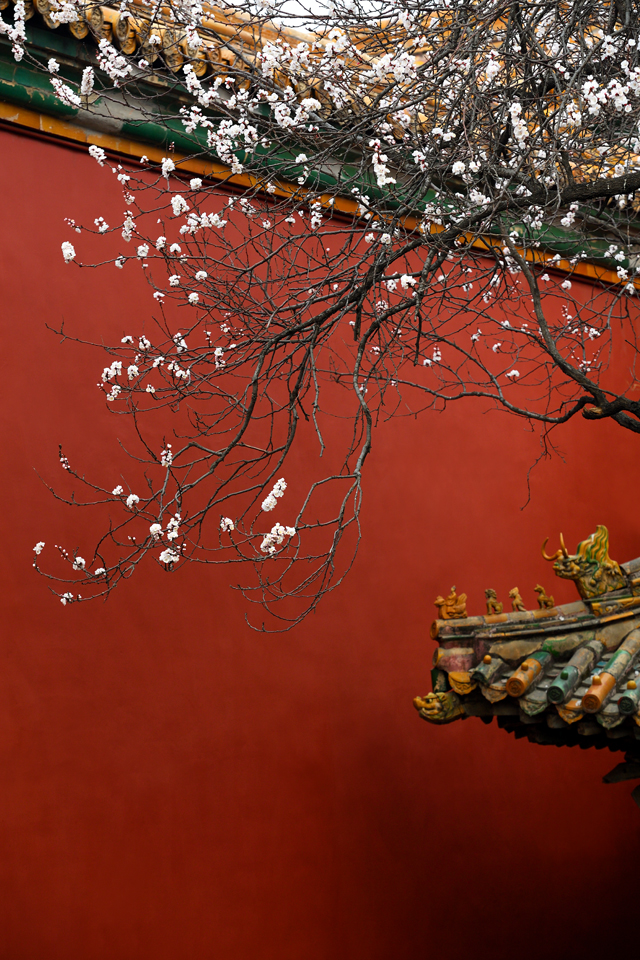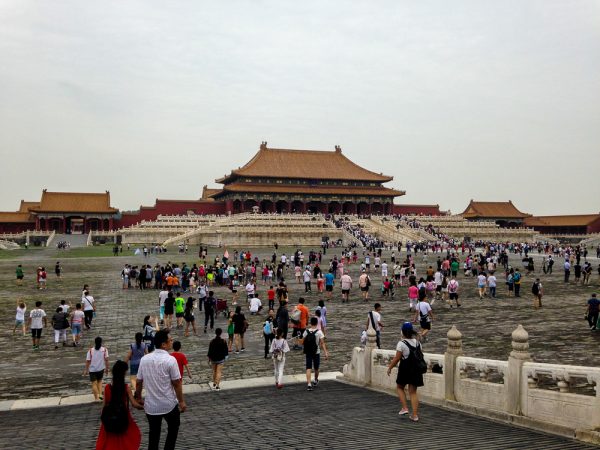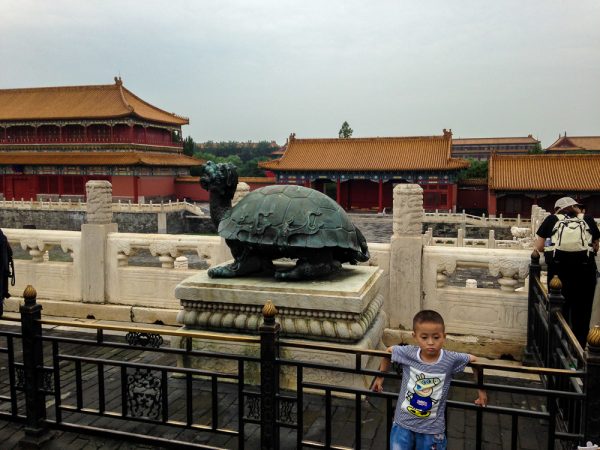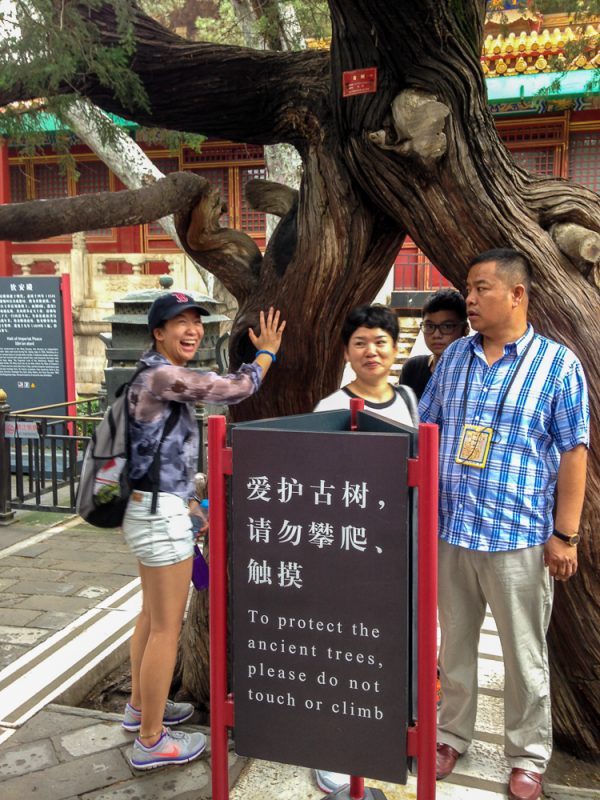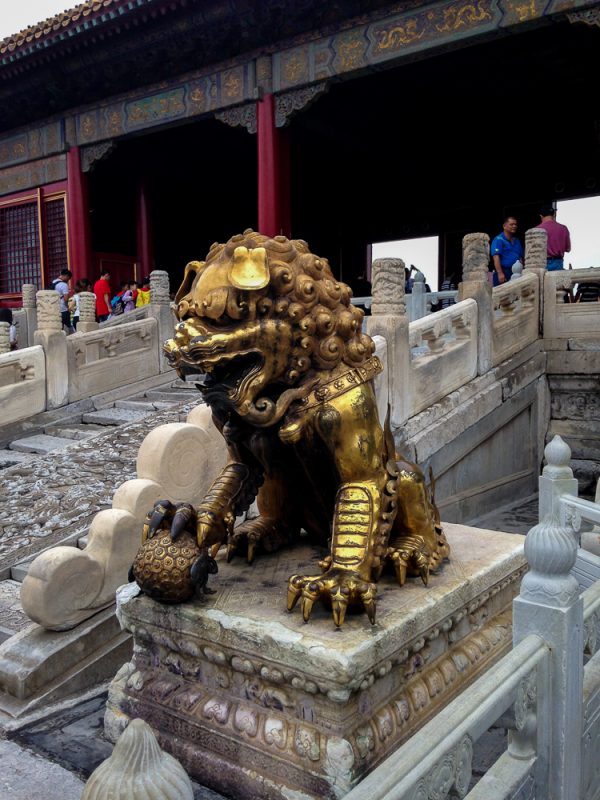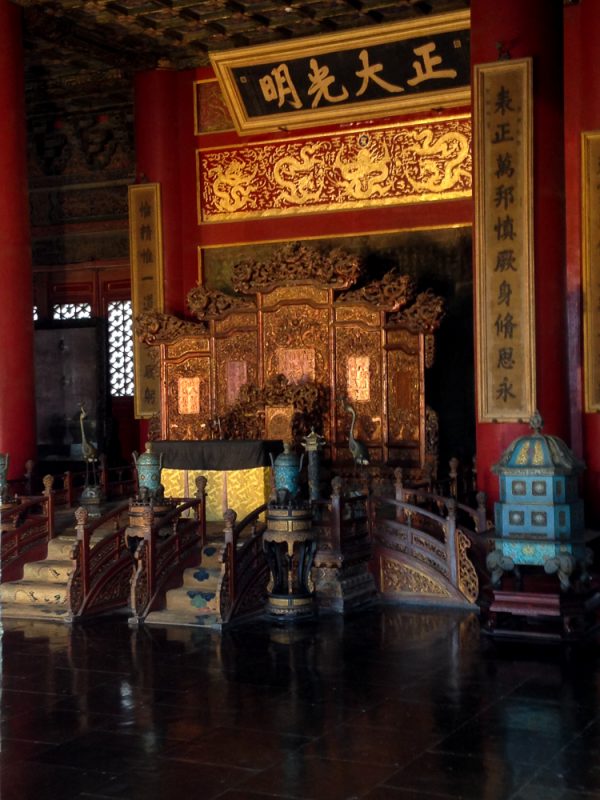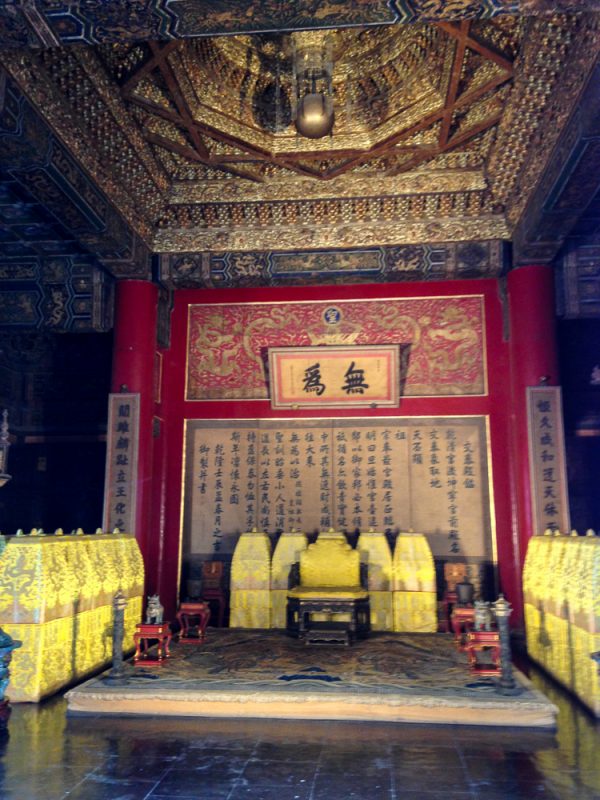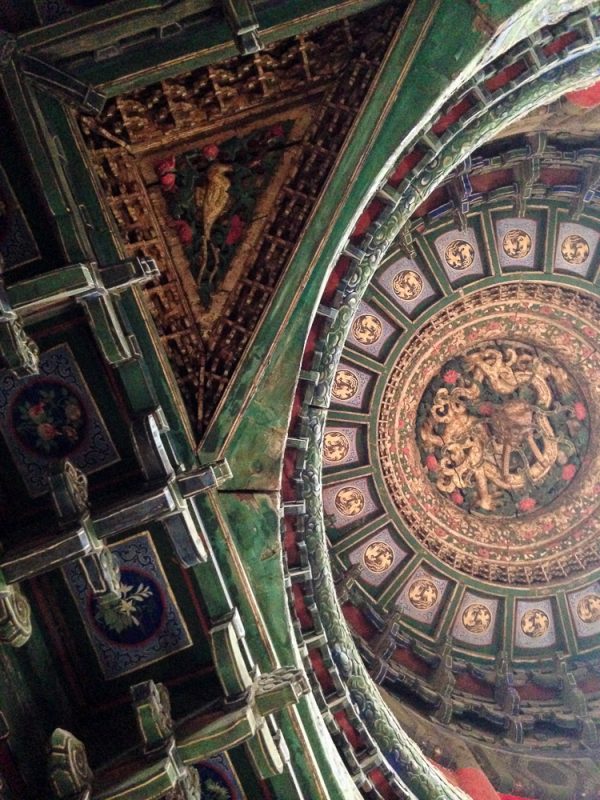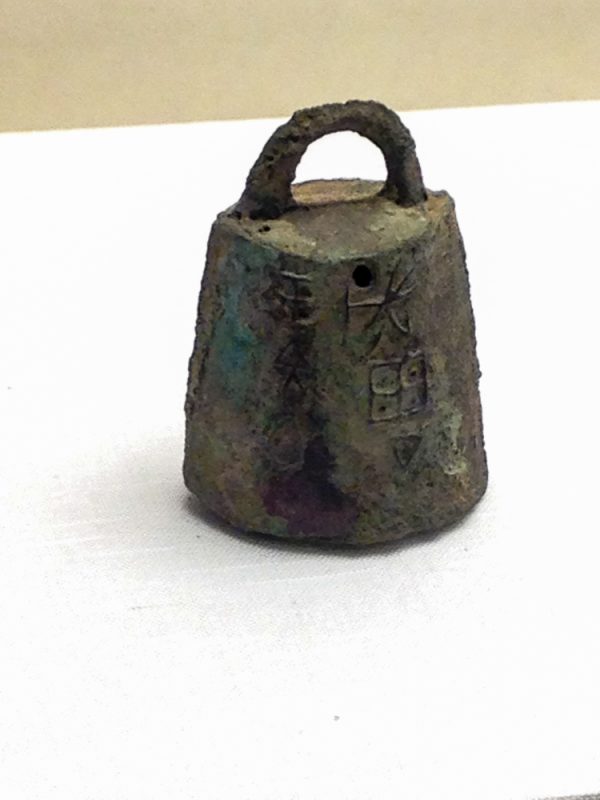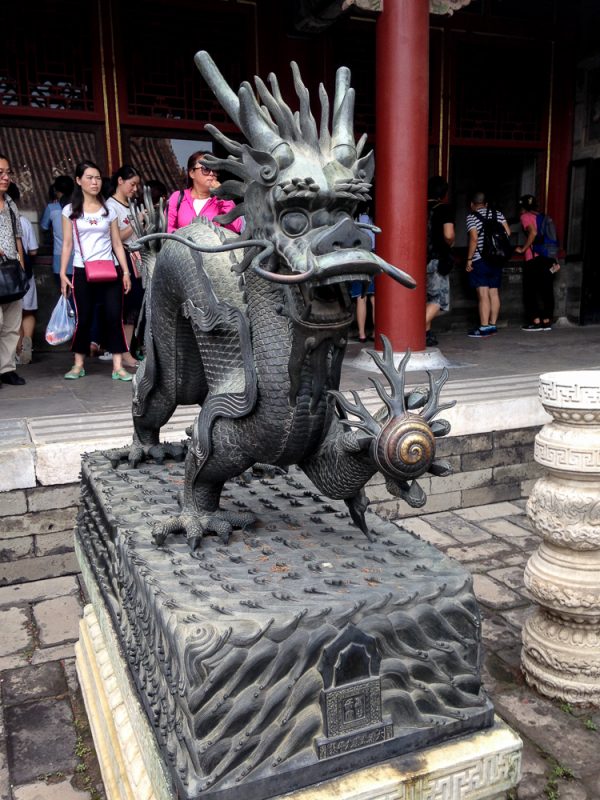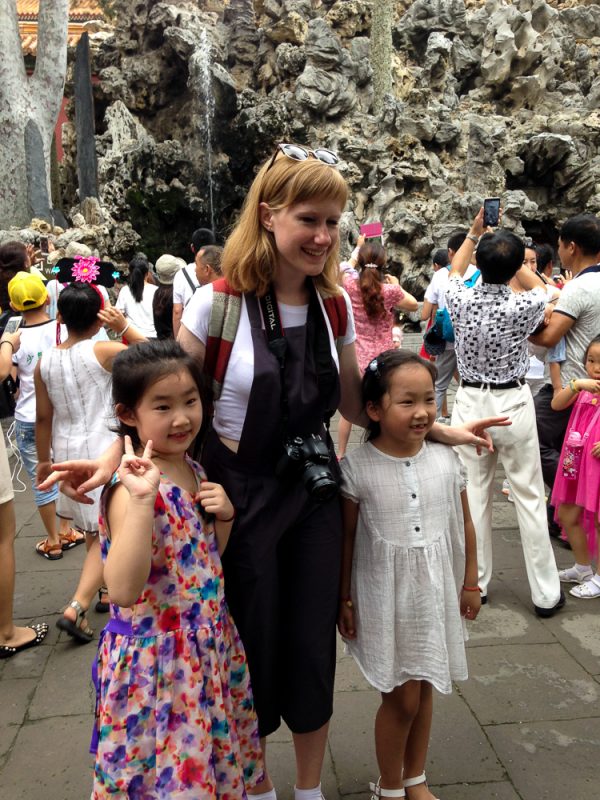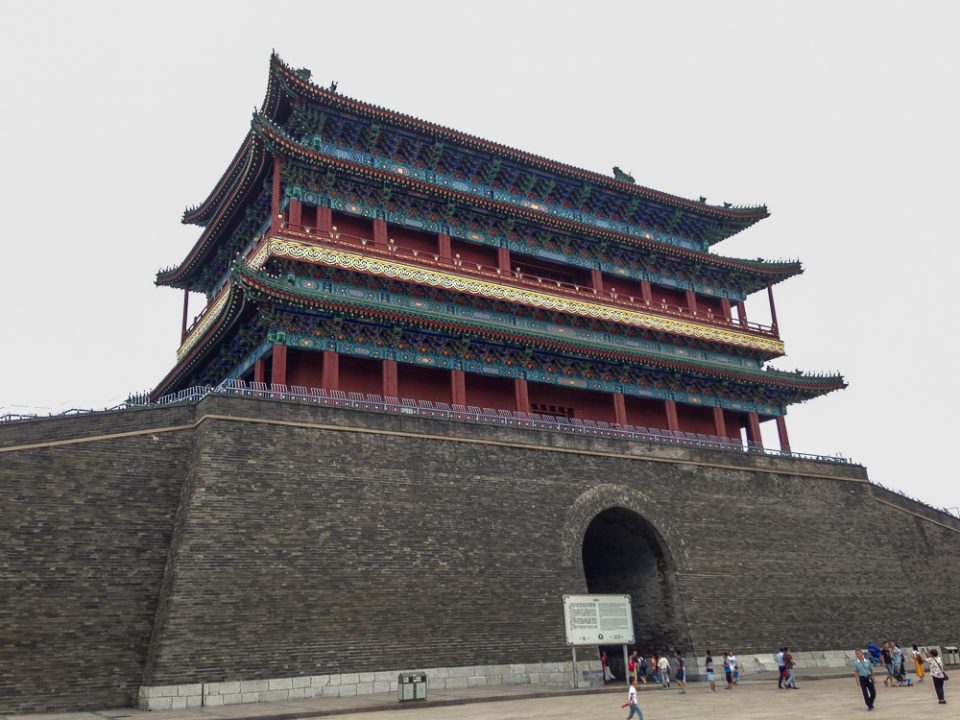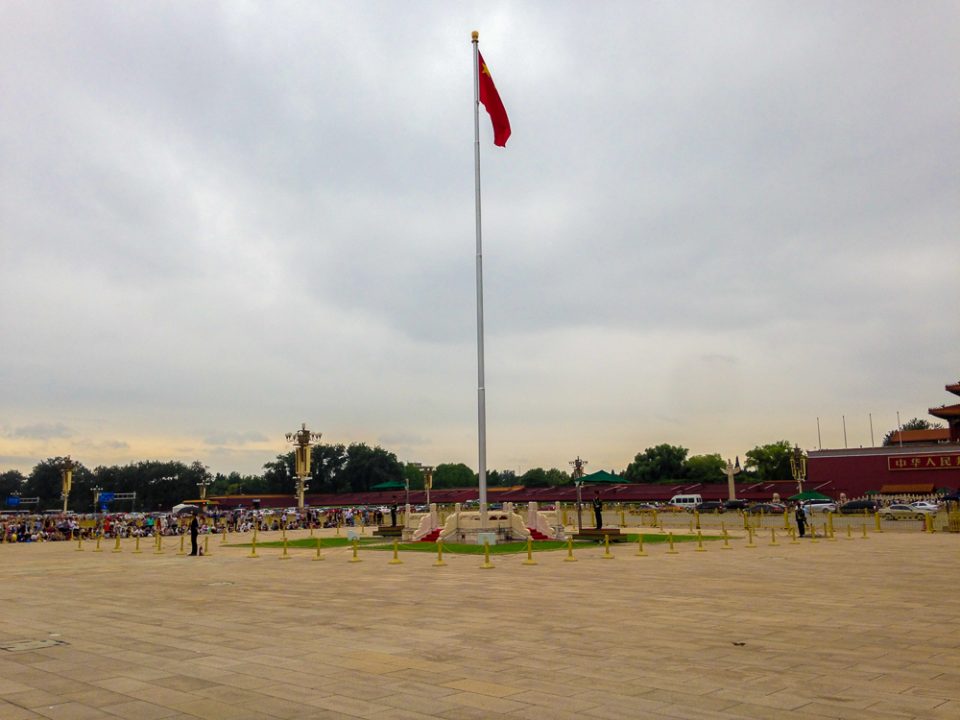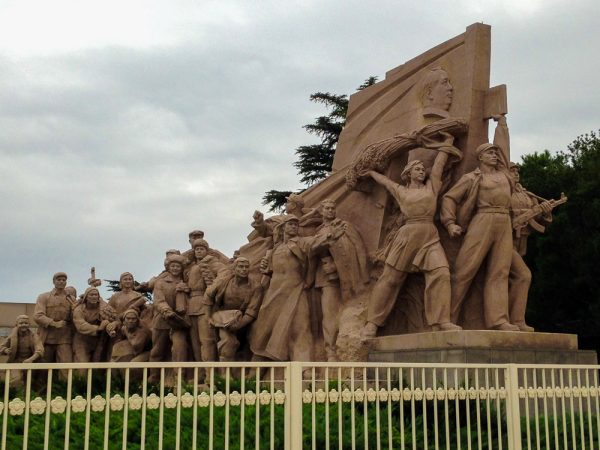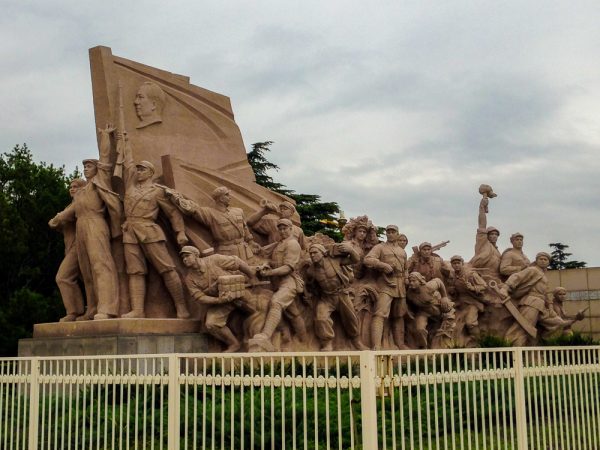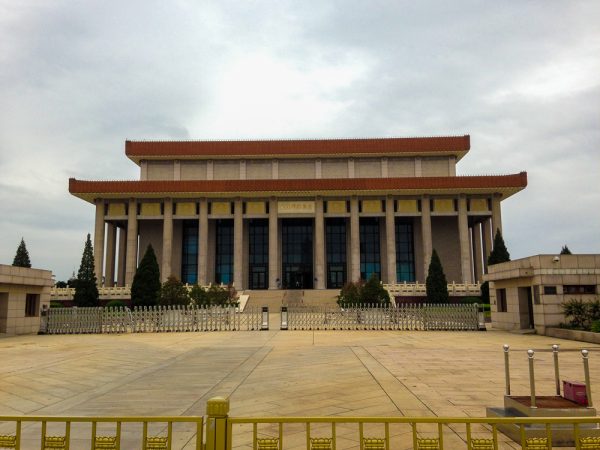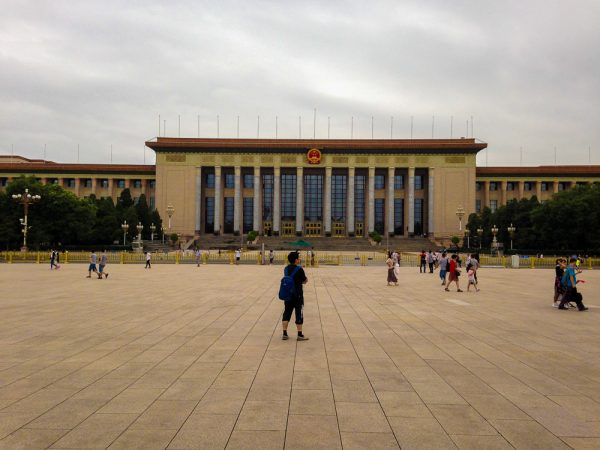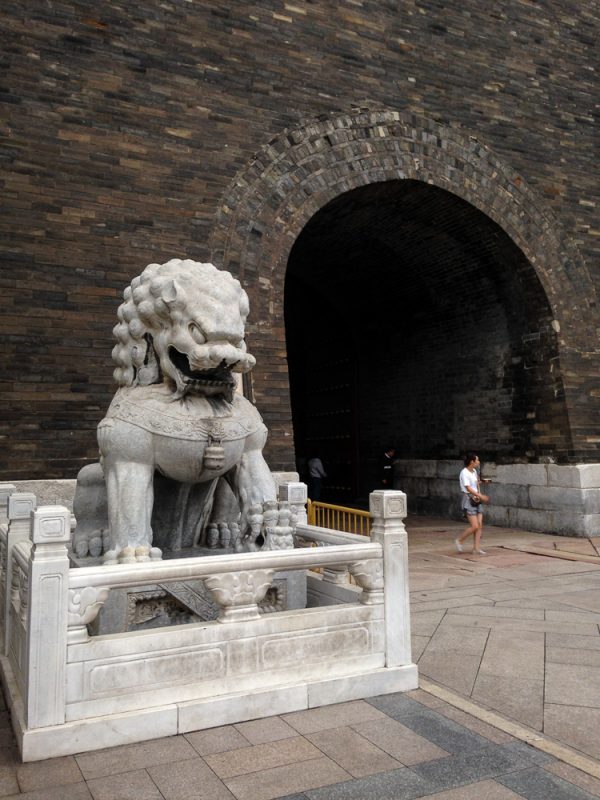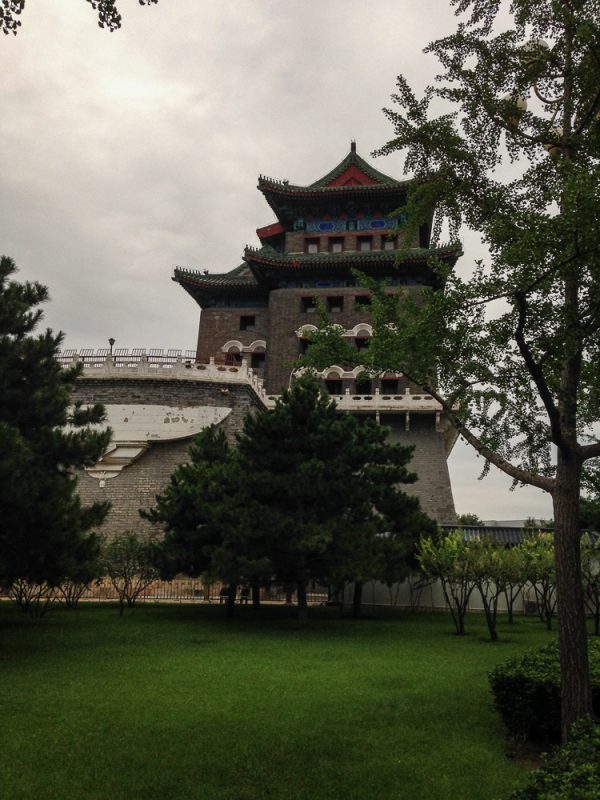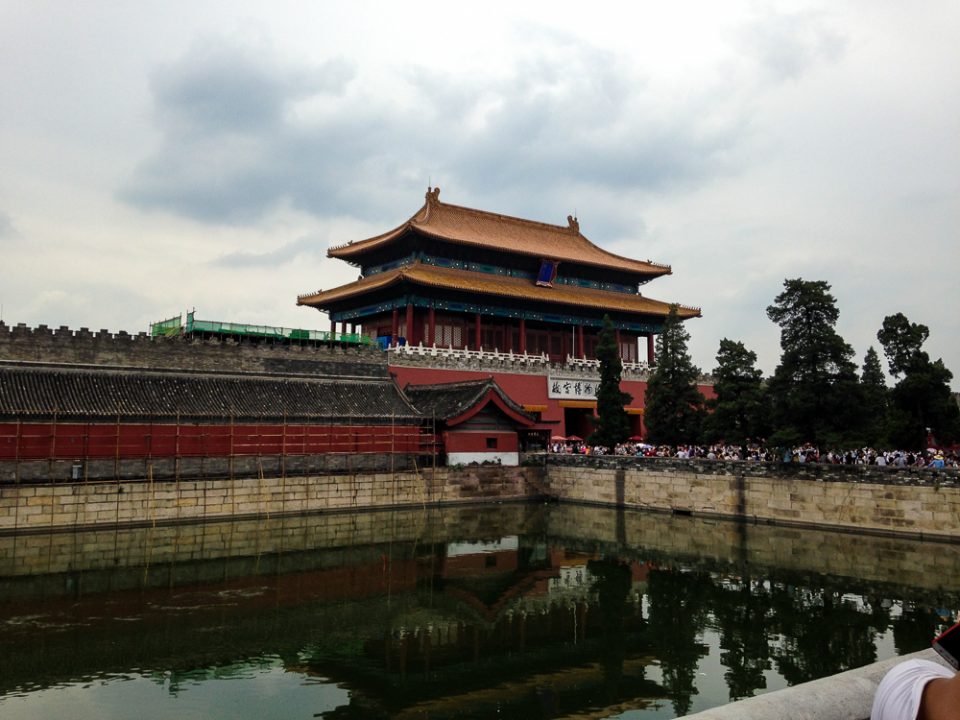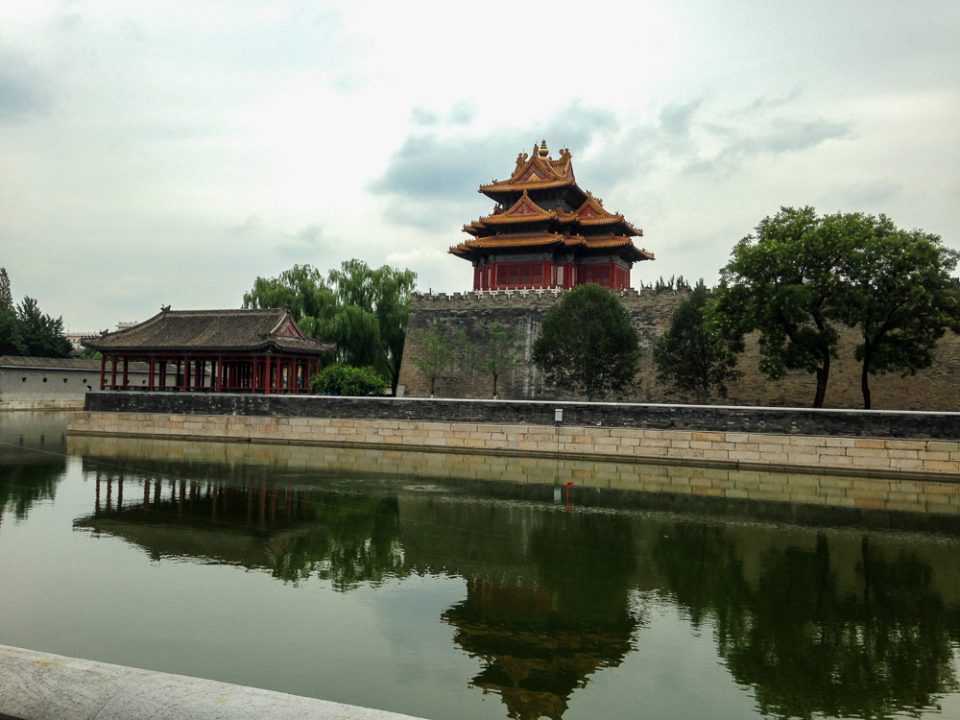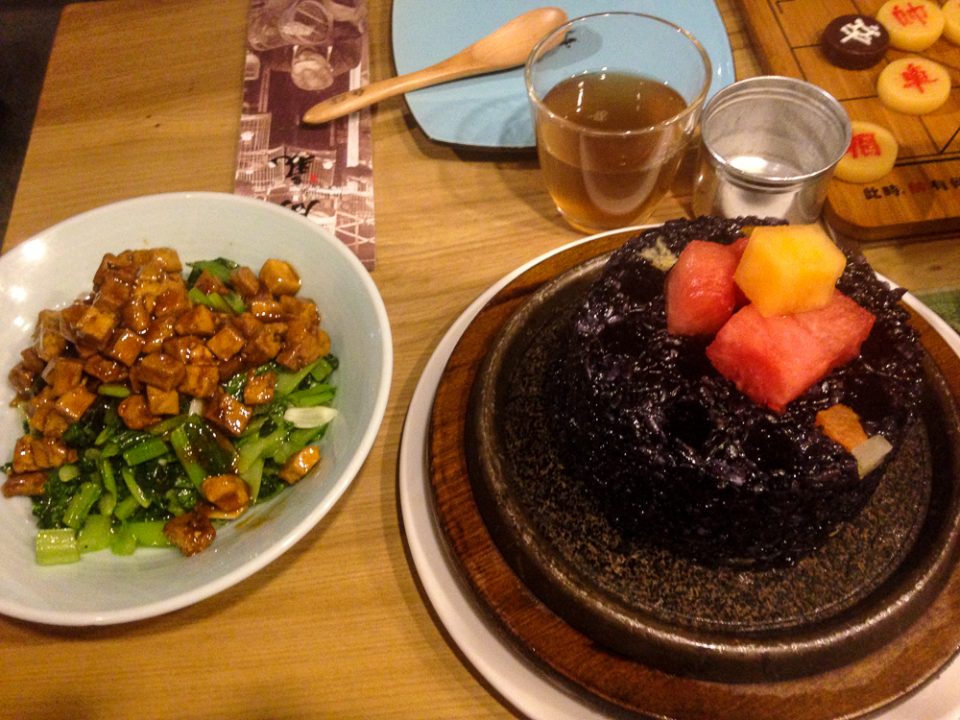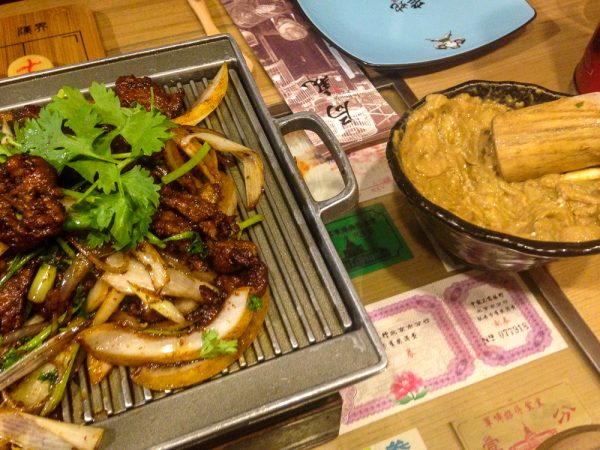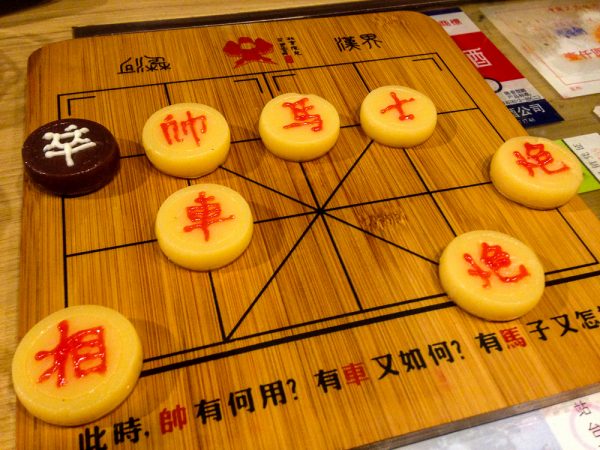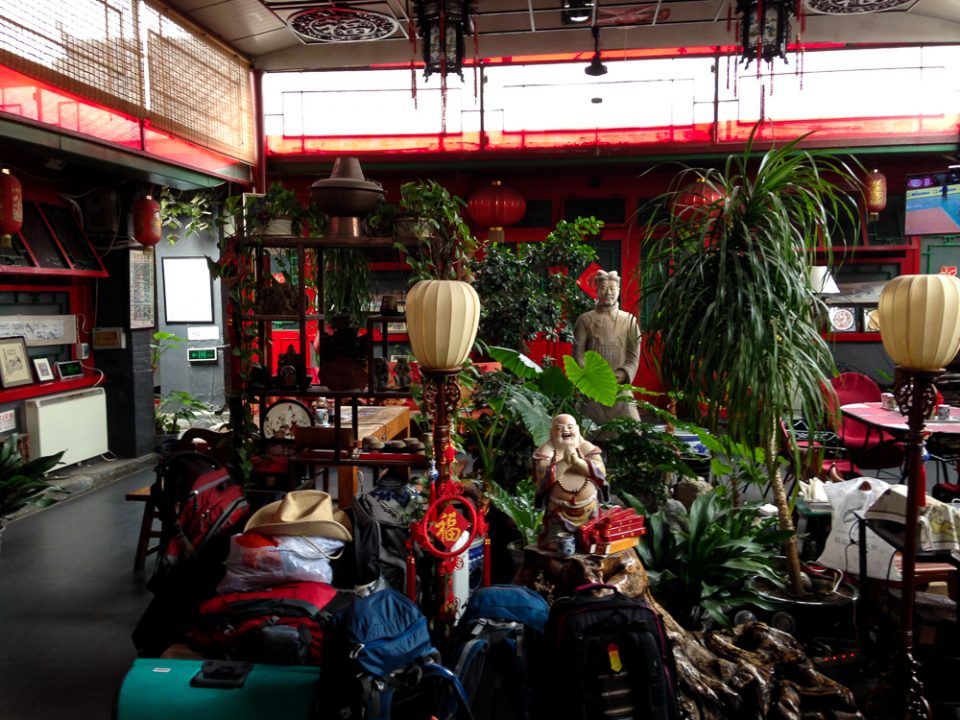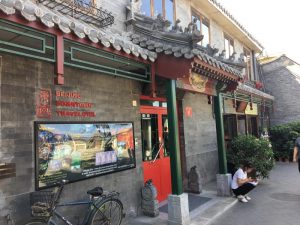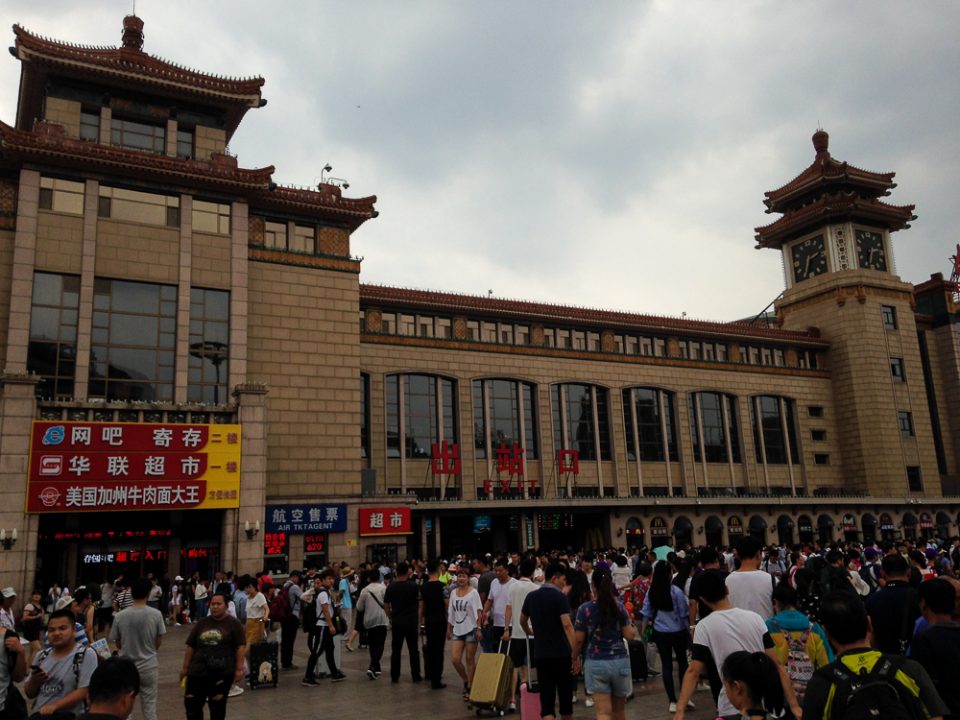The Forbidden City and Yongle Emperor
Published by CamDarling on
The Forbidden City is truly one of the great historic sights in the world today. The 600 year old palace is extremely well preserved and has witnessed the fall of empires, revolutions and a dramatic shift in policy. It was forbidden to enter… now the palace sees over 16 million visitors each year. It’s an enormous complex located just north of Tiananmen Square and the National Museum of China. Except this is one museum where you’ll want to read up in the history before you go.
The Forbidden City has many exhibits and large courtyards, but it’s simply so crowded there aren’t a lot of plaques to read. You really need to know a little about Chinese history to appreciate the significance of the palace as a center of power and politics. So enjoy our piece on the Ming Dynasty and the Yongle Emperor!
The museum has a huge collection of historic artifacts dating back centuries, to thousands of years. I believe the little bell in the gallery below was over 3000 years old! The museum only has a few exhibits on at once but many more available online as virtual galleries.
Below, I included some tips for spending the day inside the Forbidden City and links to awesome free wallpapers. Plus, thanks to our local friends, we have some tips of where to eat for cheap like a local and some great hostels near the Forbidden City.
Entering the Forbidden City
Each day 80,000 tickets are made available to tourists to enter the Forbidden City, also known as the Palace Museum. That alone should hint at the scale and popularity of this amazing historic site. But it’s also a warning for how crowded it could be once inside. In 2016, 16 million tourists visited the Forbidden City, an average of 43,800 per day.
To put that in perspective, France is the most visited country in the world for foreign tourists and the Eiffel Tower sees only 7 million tourists each year… Less than half. World Atlas put together a list of the most visited tourist attractions in the world, the Forbidden City is No. 10 and the highest ranked museum. You can tell by the security, it’s a big deal!
30,000 tickets are sold at the gate each day, so getting a ticket shouldn’t be a problem. Go early to queue in line and have enough time to see everything. We recommend to spend a minimum of four hours inside. Bring water, a snack and be prepared to step out of the crowd for short breaks.
You can reserve tickets through guided tours and tourist websites but the official website ticket booking is only in Chinese. Ask a Chinese friend to help but be confident you can always get a ticket the day of no problem!
The Palace Museum Info
- Fee: 60 Yuan ($8.80 USD) from April to October & 40 Yuan ($5.85 USD) from November to March.
- Hours: April to October 8:30 am to 5:00 pm. November to March 8:30 am to 4:30 pm.
- Services: Rotating Exhibits, Virtual Gallery & Free Downloadable Wallpapers
The official website for the Forbidden City is really great, I recommend checking it out! There is a detailed historic timeline covering the entire 276 year reign of the Ming Empire and the 268 years of the Qing Empire.
The Palace Museum has four official apps but they have yet to be translated into English. If you can read simplified Chinese, it’s your lucky day! We will keep an eye out for when they are released in English because they are great apps.
Free Forbidden City Wallpapers
The Forbidden City Website has a collection of 918 free wallpapers. Click on the photos below to take you to the right page. Each one is available in a variety of sizes for desktops, phones & tablets. This is really appreciated because it’s almost impossible to get a photo of the Forbidden City without a person in the frame, a crowd or a clear blue sky in the background. Most of our photos had to be edited due to the constant grey sky from pollution. So it’s nice getting a free photo or wallpaper even if watermarked.
The Forbidden City Gallery
Tiananmen Square
Tiananmen Square is infamous in western society. Most people have heard the name associated with a photo taken just prior to a government sanctioned massacre of hundreds of protesters. To this day, any mention of the event is censored in China. So most young native Chinese don’t really know much about it.
The protests were the result of a transitional decade in the 1980s when China opened itself to becoming a market economy. A lot of people became very rich while millions were struggling to find jobs in the new manufacturing industries. Inflation rose, the one child policy was still relatively new and westerns policies like Freedom of Speech and Freedom of the Press gained popularity.
Economic downturns are bad for any political system, but terrible for centralized authoritarian governments. To this day, policy in China is centered around economic growth and keeping everyone employed. This often means devaluing their currency to keep prices low for their exports. China has a long history of the people rising up against their rulers. Civil unrest is what brought down the Ming Dynasty.
To the native Chinese, Tiananmen Square is the symbol of communist China under Mao Zedong. The square includes a variety of famous sights from both the Mao Era (1949-1978) and the Imperial Eras, notably the Ming & Qing Dynasties.
- Monument to the People’s Heroes
- Mausoleum of Mao Zedong
- National Museum of China (Official)
- Great Hall of the People
- The Qianmen Gate & Arrow Tower
On October 1st, 1949, Mao Zedong proclaimed the beginning of the People’s Republic of China right there in Tiananmen Square. A ceremony is held there every year on the anniversary.
One of the most fascinating parts of the history of Tiananmen Square is during the Second Opium War from 1856 to 1860 between the British and the Qing Dynasty. Towards the end of the war, soldiers slept outside the gates to the Forbidden City. According the documents, the British Commander considered burning down the Forbidden City but realized that might be going too far. This is a negotiation for future trade after all. The Emperor fled the capital and the English & French soldiers burned down the Summer Palaces instead before the signing of the Treaty of Tianjin. English and French soldiers ransacked the sacred Summer Palace, looting treasures and artwork before setting it ablaze. Artifacts thousands of years old were lost. There kinds of atrocities by colonial powers were very common in China.
For the next 98 years from 1860 to 1959, the hutong east of Tiananmen Square was known as the Legation Quarter and inhabited by foreigners from the UK, France, Germany, Japan, Russia, Italy, Spain, Austria, Belgium, Netherlands and the United States. These foreigners, mostly diplomats, were exempt from Chinese law. Even some of the buildings were designed with western architectural influences after a siege that lasted 55 days.
I don’t just mean there were embassies. The entire hutong district was walled off from the rest of Beijing. After the Boxer Rebellion, the area was controlled and defended by western soldiers and the local Chinese were forbidden to reside inside.
The Rise and Fall of the Ming Dynasty
Before the Ming Dynasty, China was ruled by an ethnic Mongol Dynasty, the Yuan Dynasty. If you’ve seen Marco Polo on Netflix, this was the very same Mongol Empire. It was founded by Kublai Khan, the Grandson to Genghis Khan. But by the mid 14th century, the great Mongol leaders were long dead. A new power was forming in China, led by a secret Buddhist Monks society, the White Lotus.
A poor, unknown monk would rise in the rebel faction supported by the White Lotus monks. This rebellion gained support in southern China, defeated another rebellious group, then marched on Beijing to defeat the weakened last Mongol Emperor.
In 1368, a former peasant and monk crowned himself the 1st Emperor of the Ming Dynasty: Emperor Hongwu. Centuries after the rise of Genghis Khan in 1206, the world’s great conqueror, China is united once more under the rule of a Chinese Emperor. He named is capital Nanjing.
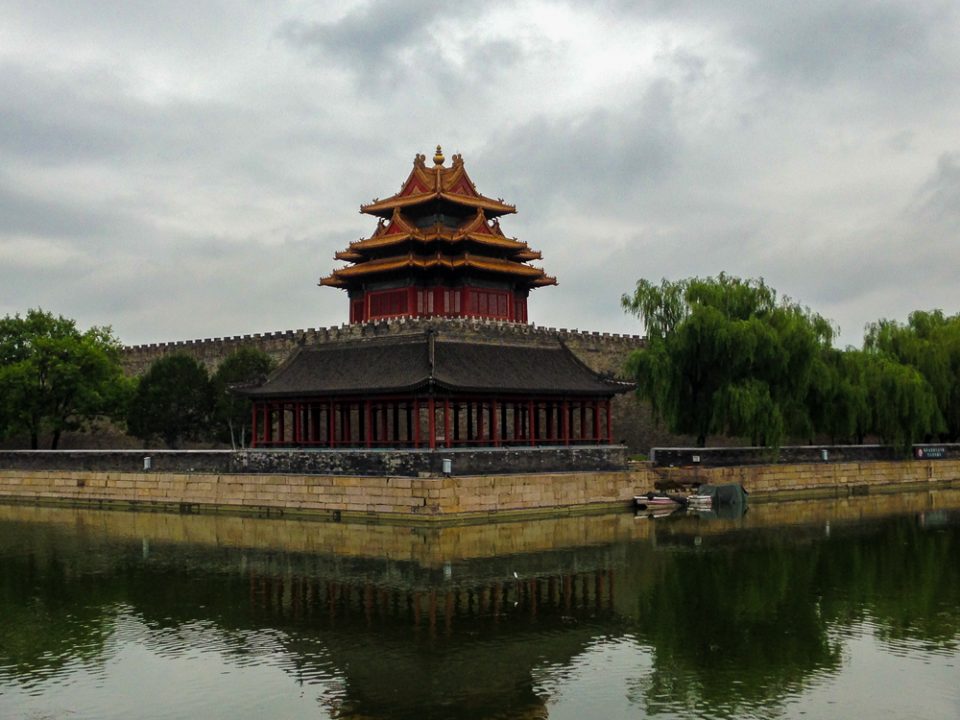
The New Capital in Beijing
Up to the year 1406, the capital of the Ming Dynasty had been in Nanjing along the East Coast of China. However, that all changed with a man named Zhu Di, the Yongle Emperor and 3rd Emperor of the Ming Dynasty. Zhu Di was the Prince of Yan and ruled, on behalf of the Emperor, a territory we now call Beijing but was formerly called Yan and also Beiping. The Chinese love naming cities.
Zhu Di’s father was the 1st Emperor of the Ming Dynasty, that poor monk, and ruled for 30 years until he died of old age at 69. He lived so long, he out lived his oldest son. So his grandson, Zhu Di’s nephew became the next Emperor of China.
The first Emperor had many consorts, but declared only his children from his primary wife could succeed as Emperor. I read he had at least 17 sons. Zhu Di was not eligible to be Emperor. Upon his father’s death, the new Emperor began removing or demoting of all his powerful uncles, the princes of the Ming, including Zhu Di.
So Zhu Di, safe in Beijing, faked an illness and madness until the new Emperor grew complacent and released his sons who were hostages in Nanjing. All the meanwhile consolidating his power in Northern China! Genius! He raised an army of Han and Manchu soldiers along with Mongol tribes from territories he had just conquered.
He marched on Nanjing, captured the Imperial Fleet on the Yangtze River and marched through the open gate of the capital. Zhu Di burned down the Emperor’s Palace and was presented the three charred bodies on the Emperor, his Wife and Crown Prince. But rumors spread that the Emperor had safely escaped although he was never seen again.
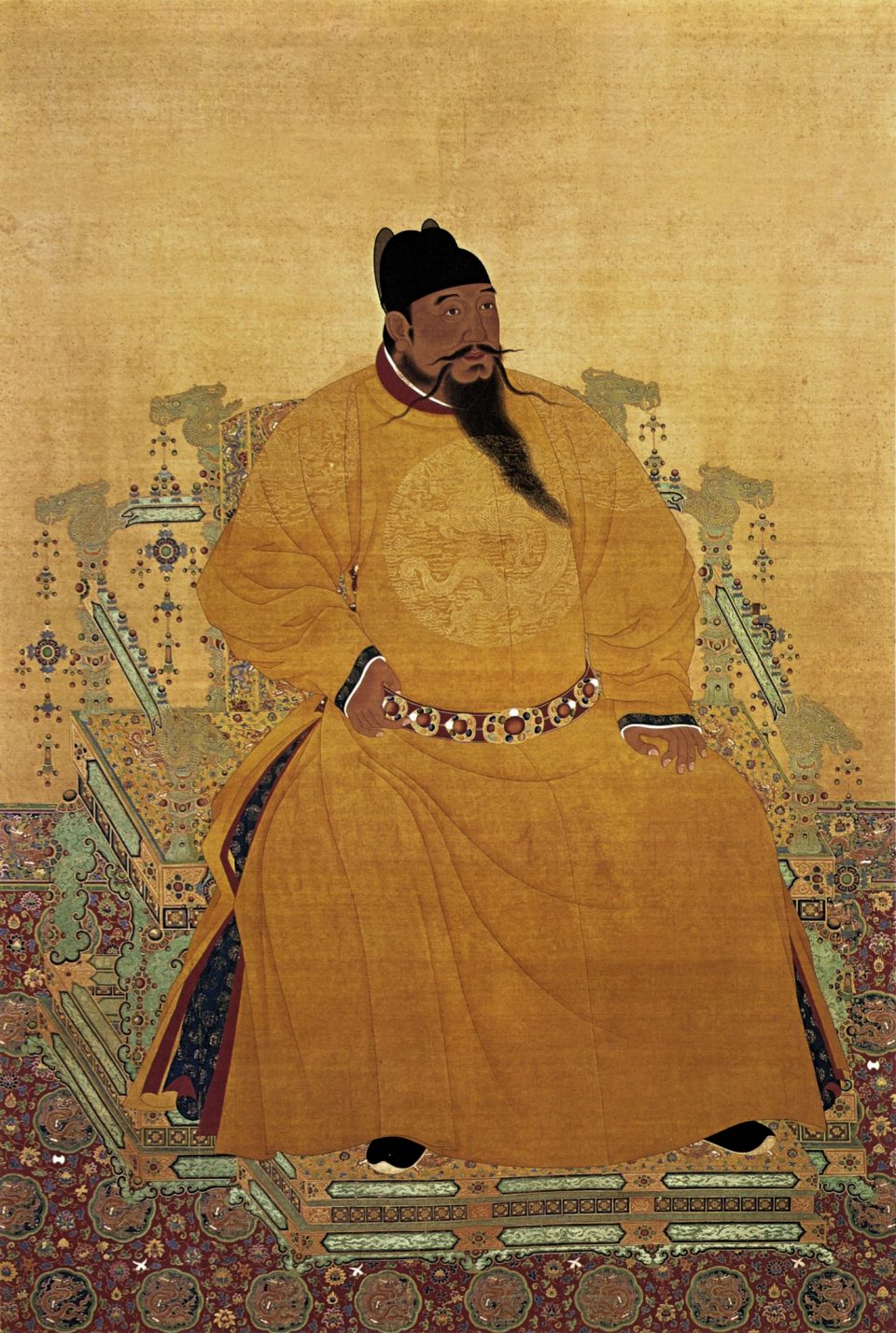
Zhu Di moved the capital to his base of power in Beijing, surrounded by allies. He had thousands of his nephew’s supporters executed and eventually began construction on the Forbidden City. It took up to 1 million workers to build the palace over 14 years. Zhu Di reigned out of his new palace in Beijing for all of four years after completion before he died of illness while on a military campaign in the Gobi Desert. For the next 500 years, the imperial powers of China would rule from the Forbidden City in Beijing.
Zhu Di also favored eunuchs as scholars and administrators within the Forbidden City’s most inner courtyards. This began a long tradition that no men could stay within the Inner Court area at night unless they were eunuchs. Over the centuries, Emperors were known to have thousands of women concubines in the palace. This gave eunuchs an enormous amount of influence in Chinese governance without threatening the Imperial Family succession.
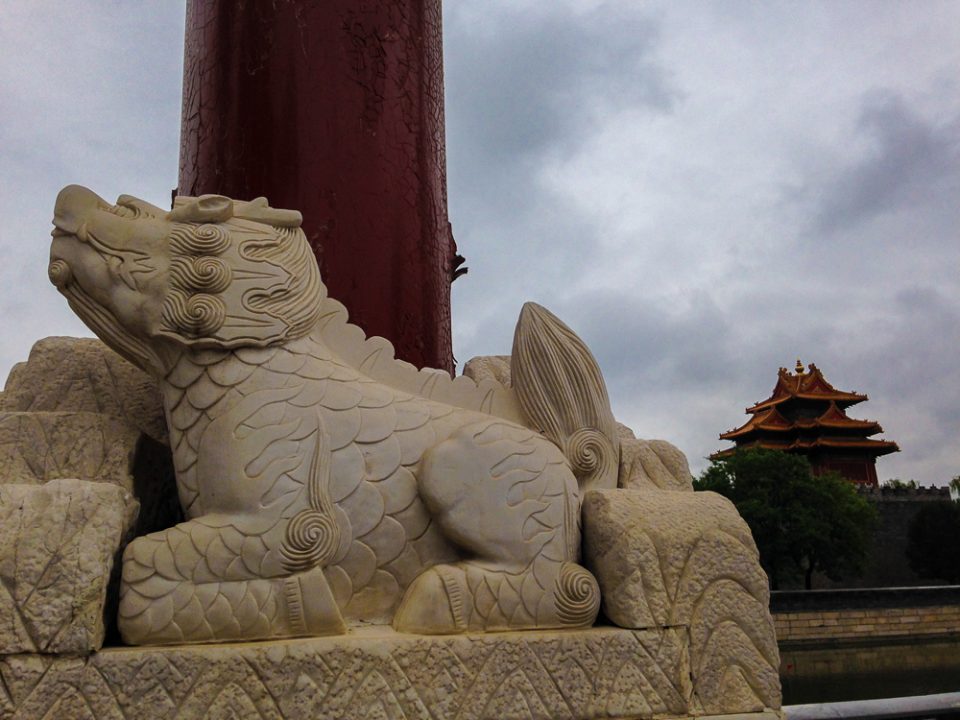
The Ming Rule in China endured a strong 220 years until the rise of a newly formed Manchu Empire that would slowly grow to becoming the Qing Empire and swallow up a weakened China. The Manchu Empire was everything north of China. While China was struggling to deal with internal problems, the Manchu tribes united into their own Empire and descended on Beijing.
We saw in our Osaka Castle article that the Japanese invaded Korea in 1590 in a brutal campaign and the Ming Dynasty was forced to send troops to push back the Japanese invasion. Korea was it’s own kingdom but sent tribute to the Chinese Empire for these exact scenarios. Constant defensive wars are expensive and the Ming weren’t conquering any new lands to refill their treasury. The Ming were weak and the Manchu Emperor knew it.
By 1640, rebels from within China carved out a portion of the west in modern day Sichuan and Shaanxi Provinces. The farmers began revolting and roaming the countryside as armed rebels. Without workers to sow the fields, the government couldn’t collect any rice to feed the army. The Imperial Army lost a decisive battle against the eastern rebel forces. The city gates to Beijing were thrown open from the inside and without any hope the last Ming Emperor hung himself on a zuihuai tree in the garden.
The Ming exempted lands owned by temples from taxation, so increasingly poor peasants who owed taxes were donating their lands to the large Buddhist Temples. Over time, this left significantly less land to tax, pushing the remaining land owners to the break of starvation as the Ming levied even more taxes on them. The taxes were rice, or other goods. An Empire with 160 million people is very powerful, but very dangerous for any government that falls out of favor with the people. After three centuries of rule, the Ming Dynasty fell from all sides.
Dine like a local in Beijing
After spending a month in China with other tourists, local friends and their family, I learned how to eat like a local. There are three kinds of restaurants in China from what I gathered:
- The local cheap eats usually right off the street.
- The tourist restaurants located in the major tourist areas
- The restaurants in the local malls.
On four occasions, my local friends took me out to eat at the malls and I didn’t understand why at first. The mall is not where I find good food in North America. It’s for food courts and coffee. But China is different! The same, but different!
The restaurants inside the mall are really great! Think of the restaurants at Casinos in Vegas attached to the biggest hotels. Because the malls aren’t very touristy, nothing is marked up, so four of us could eat out for $30 USD, or 200 Yuan. Really top notch food with multiple courses! I paid $12 USD or 80 Yuan for a cocktail at a tourist bar. Way too expensive for China! Going to local places is the thing to do! I tried dong-bei food, meaning ‘north-east’ style food. So good! The set meals include a main dish, sides and drinks, usually tea.
The locals in Beijing don’t eat in Zone 1 near the Forbidden City. They pre-book their table for a specific time and prepay using an app (Dianping) for a big discount! Dianping is like yelp and groupon combined into one super food app. The idea of walking into a restaurant in China and getting a table right away is laughable. The best places are always packed and pre-booked using food apps.
If you have a local friend, ask them to make a reservation for you and slide them some cash. Otherwise, don’t be afraid to ask the hotel or hostel staff for help! They can at least call to make a reservation or help you find a really great restaurant in Beijing. Also I encourage you to group up with other travelers. The Chinese dining experience is better in groups of four or more because you can order sets of dishes and share them! That eggplant paste is the best eggplant dish I have ever had in my life. Beside it is our main dish of grilled duck wings!
City Wall Hostel
I stayed in Beijing for 5 days but split up as I made my way to Dalian for a few days. The first two nights, I stayed at the City Wall Hostel (Sitting on the City Wall Hostel Website).
It was in the perfect location only a few blocks from the North Gate of the Forbidden City. It wasn’t a party hostel, I think I saw only two other people there during the day. It was clean, comfy, and they let me keep my bag there after checkout while I was touring the city. Always appreciated.
For me, it was just a cheap ($12 a night) place to rest after a long day and night in Beijing with my local friend. I definitely recommend it because you can’t beat the location. Walking an extra half hour after an already long day is fine but getting a hostel nearby is always a good decision.
If you are looking for a social environment, check out the Beijing Downtown Backpackers Hostel on Hostelworld. It was busy, close to the main tourist areas and includes a small breakfast at the restaurant next door.
Beijing was the most expensive city in mainland China for booking a Hostel bunk. From Yangshuo at $5 a night, I was appalled to spent around $19-$20 in Beijing. That may not seem like a lot but avid backpackers can relate. Hotels are also very pricey for single bed rooms.
Getting to the Forbidden City
Beijing has five zones, think of them as rings with the Forbidden City directly in the center, Zone 1. But the center isn’t like the normal downtown of a major city, especially one with 20 million people. Zone 1 is the historic center, the government center and the place to be as a tourist.
Zone 1 is almost entire single or two story buildings which gives it this traditional and historic feeling. The small neighborhoods surrounding the Forbidden City are known as ‘Hutongs’. Many of the best hostels, shops and restaurants are hidden away in the narrow alleys of these hutongs. So don’t be afraid to poke your head in some of the small shops. I walked in one and saw $400 USD silk dresses, beautiful but definitely not what I was expecting from the outside.
Getting around Beijing is easy! They have a world class subway system with stations within a 10 minute walk from almost everywhere in the city. Note there are security X-ray scanners at every station so maybe leave your pointy souvenirs at home. They took my friend Ben’s utility knife he forgot was in his bag.
If you’ve read our 5 Best Apps for China, you should already have a good subway system app for all the Chinese cities. They make navigating all the subway lines super easy! I’ll include links to the Android and iOS versions.
More Info on China
Traveling in China can be a challenge due to the language barrier and internet censorship. Check out the Best VPNs for China so you can use Google Maps, Instagram and Facebook. And consider pick up a SIM Card for cheap to share all those awesome moments live with friends. SIM Cards are cheap in China and worth picking up for longer trips.
We know researching for a trip can be tedious. So we put together a list of books, movies and podcasts to get you in the mood for travel to China. Check it out under Books & Things.
If you haven’t read our article on the Qin Dynasty, it’s a great introduction to how China became a unified Empire. We are working on more articles for the Summer Palace and the Great Wall so stay tuned!
